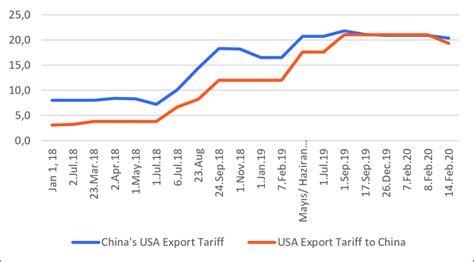In the fast-paced world of international trade, tensions between economic powerhouses can ignite a firestorm of consequences. The latest spark in this fiery saga comes from China’s decision to slap all U.S. imports with a hefty 34 percent tariff as a countermeasure against President Donald Trump’s recent trade actions.
The move announced by Beijing’s finance ministry on Friday sent shockwaves through global markets, signaling the possibility of an impending trade war between two of the world’s largest economies. This retaliatory stance is a direct response to the tariffs imposed by the U.S., particularly targeting Chinese goods in an attempt to address America’s significant trade deficit with China.
Understanding the Trade Dynamic
To grasp the gravity of this situation, we must first delve into the intricate web of international trade dynamics. The United States has long been grappling with a substantial trade deficit in goods with China due to its heavy reliance on imports from the Asian giant. In an effort to recalibrate this balance, President Trump unveiled a series of comprehensive tariffs aimed at reshaping America’s trade relationships.
Escalating Retaliation
China’s decision to escalate the conflict by imposing a blanket 34 percent tariff on all U.S. imports serves as a bold statement of defiance against what they perceive as unjust unilateral actions by Washington. This tit-for-tat exchange not only raises concerns about the immediate impact on businesses and consumers but also sets the stage for broader repercussions that could reverberate across global supply chains.
The Stakes at Play
As these economic giants engage in a high-stakes standoff, other major players like the European Union are closely monitoring developments and contemplating their own responses to navigate these turbulent waters. The risk of escalation looms large, with potential ripple effects that could disrupt industries ranging from technology and manufacturing to healthcare and energy.
Behind the Numbers
Beyond just numbers and percentages lie real-world implications for industries reliant on critical raw materials essential for various applications like magnets, nuclear technology, medical research, and more. By tightening restrictions on exports of key metals such as samarium, gadolinium, terbium, dysprosium, lutetium, scandium, and yttrium – which are vital components in cutting-edge sectors – China aims to assert its position amidst mounting tensions.
In a pointed statement underscoring their grievances, China’s finance ministry emphasized that such actions by the U.S. not only contravene established international trade norms but also infringe upon China’s legitimate interests while embodying what they term “unilateral bullying.”
Amidst this escalating confrontation lies an intricate web of geopolitical maneuvering intertwined with economic imperatives that have far-reaching ramifications beyond mere balance sheets or export figures. As experts analyze each twist and turn in this unfolding drama, businesses worldwide brace themselves for potential disruptions while governments strategize their next moves in this high-stakes game of global economics.




Leave feedback about this